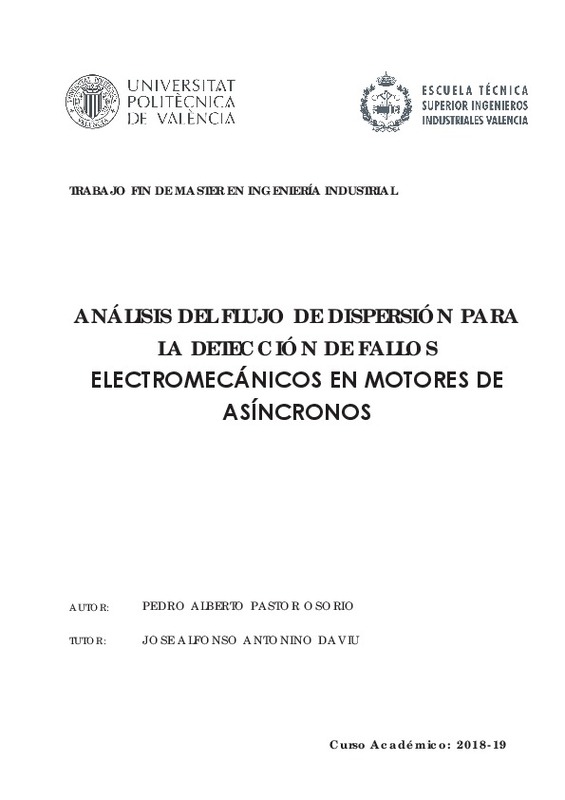|
Resumen:
|
[ES] En este Trabajo Fin de Master se pretende comprobar la validez de la técnica basada en el análisis de flujo de dispersión para el diagnóstico de averías electromecánicas en motores asíncronos.
La técnica de diagnóstico ...[+]
[ES] En este Trabajo Fin de Master se pretende comprobar la validez de la técnica basada en el análisis de flujo de dispersión para el diagnóstico de averías electromecánicas en motores asíncronos.
La técnica de diagnóstico basada en análisis de flujo, si bien conocida desde hace años, ha concitado reciente interés en la industria debido al progresivo abaratamiento de los sensores de flujo y a las ventajas inherentes de la misma (simplicidad, carácter no invasivo ). Sin embargo, la literatura relativa a su aplicación con fines de diagnóstico es todavía limitada y su uso se ha visto relegado hasta la fecha a aplicaciones concretas en régimen estacionario.
El objetivo de este Trabajo Fin de Master es profundizar en la aplicación de la técnica en lo que respecta a su aplicación para la detección de fallos en el rotor y otras averías electromecánicas. El objeto es no solamente aplicar técnicas basadas en el análisis de señales en régimen permanente, sino también extender el análisis al estudio de señales en régimen transitorio, tales como señales capturadas durante el arranque.
A tal efecto, tras una revisión de la literatura técnica en el área, se pretenden desarrollar múltiples ensayos de laboratorio en motores con diferentes niveles de avería en el rotor, así como motores con otros posibles fallos. En cada ensayo, se registrará la señal de fuerza electromotriz inducida en una bobina externa colocada en diferentes posiciones sobre la carcasa del motor. Las señales se registrarán tanto durante el arranque como en régimen permanente.
Las señales capturadas se analizarán posteriormente con herramientas aptas para cada régimen (transformada de Fourier para permanente y transformadas wavelet en régimen transitorio). Posteriormente se interpretarán los resultados obtenidos, evaluando la fiabilidad de cada análisis y la idoneidad de cada posición estudiada.
[-]
[EN] The aim of this Final Master's Thesis is to verify the validity of the technique based on stray flux analysis for the diagnosis of electromechanical faults in asynchronous motors.
The diagnostic technique based on ...[+]
[EN] The aim of this Final Master's Thesis is to verify the validity of the technique based on stray flux analysis for the diagnosis of electromechanical faults in asynchronous motors.
The diagnostic technique based on magnetic flux analysis, although well known for years, has drawn recent interest in the industry due to the progressive decrement of the cost of flux sensors as well as to the inherent advantages of the technique itself (simplicity, non-invasive nature ...). However, the literature related to its application for diagnostic purposes is still limited and its use has been relegated to specific applications in steady state.
The objective of this Master's Thesis is to deepen the application of the technique with regard to its application for the detection of rotor failures and other electromechanical failures. The object is not only to apply techniques based on the analysis of signals in steady state, but also to extend the analysis to the study of signals in transient regime, such as signals captured during startup.
To this end, after a review of the technical literature in the area, we intend to develop multiple laboratory tests on motors with different levels of rotor failure, as well as motors with other possible failures. In each test, the induced electromotive force signal will be captured in an external coil attached to different positions on the motor housing. Signals will be recorded during both start-up and steady-state.
The captured signals will be analyzed later with tools that are suitable for each regime (Fourier transform for steady-state and wavelet transforms for transient regime). Subsequently, the results obtained will be interpreted, evaluating the reliability of each analysis and the suitability of each position studied.
[-]
|







